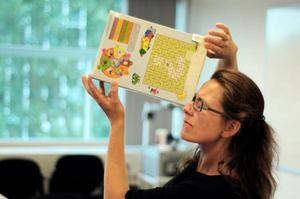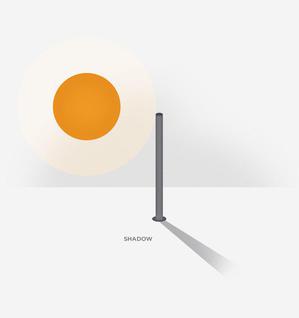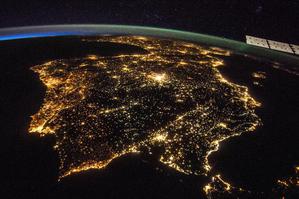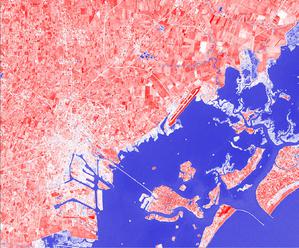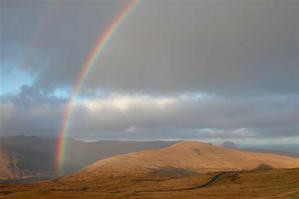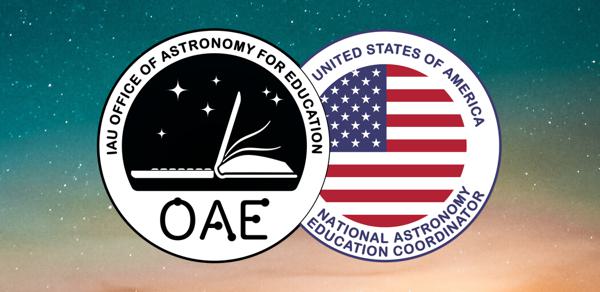Glossary term: Light
Description: Light is electromagnetic radiation. In common use, light typically refers to electromagnetic radiation with a wavelength that can be seen with the naked human eye. The wavelength of light that can be seen by humans is broadly in the range of 380–750 nanometers (nm), although most humans have very little sensitivity to light with wavelengths shorter than 400 nm. This is a narrow part of the electromagnetic spectrum that covers a wide range of wavelengths from gamma (the shortest) to radio waves (the longest). More broadly the term light is sometimes applied to any electromagnetic radiation.
The basic properties of light are intensity, direction of propagation, frequency, spectrum, and polarization. Its speed in a vacuum is defined to be exactly 299,792,458 meters per second, and this is one of the fundamental constants of nature. The color of light depends on its wavelength. Violet light has the shortest wavelength in the visible spectrum; red has the longest. Light has multiple sources, natural and artificial; the Sun is the Earth's main source of light. Light is emitted and absorbed in small "packets" called photons that have properties of both waves and particles. This latter phenomenon is called the wave–particle duality.
Related Terms:
See this term in other languages
Term and definition status: This term and its definition have been approved by a research astronomer and a teacher
The OAE Multilingual Glossary is a project of the IAU Office of Astronomy for Education (OAE) in collaboration with the IAU Office of Astronomy Outreach (OAO). The terms and definitions were chosen, written and reviewed by a collective effort from the OAE, the OAE Centers and Nodes, the OAE National Astronomy Education Coordinators (NAECs) and other volunteers. You can find a full list of credits here. All glossary terms and their definitions are released under a Creative Commons CC BY-4.0 license and should be credited to "IAU OAE".
If you notice a factual error in this glossary definition then please get in touch.
Related Activities
Build a Safe Sun Viewer
astroEDU educational activity (links to astroEDU website) Description: Build a safe Sun viewer using cheap household items and learn why it is dangerous to look directly at the Sun, even briefly.
License: CC-BY-4.0 Creative Commons Attribution 4.0 International (CC BY 4.0) icons
Tags:
Hands-on
, Safety
Age Ranges:
6-8
, 8-10
, 10-12
Education Level:
Primary
, Secondary
Areas of Learning:
Modelling
, Observation based
Costs:
Low Cost
Group Size:
Group
Skills:
Planning and carrying out investigations
Sun’s Shadow
astroEDU educational activity (links to astroEDU website) Description: Why is the Sun's shadow so important?
License: CC-BY-4.0 Creative Commons Attribution 4.0 International (CC BY 4.0) icons
Tags:
Hands-on
, Shadows
Age Ranges:
6-8
, 8-10
, 10-12
, 12-14
, 14-16
Education Level:
Informal
, Middle School
, Primary
, Secondary
Areas of Learning:
Observation based
, Social Research
Costs:
Medium Cost
Duration:
1 day
Group Size:
Group
Skills:
Asking questions
, Communicating information
, Constructing explanations
, Engaging in argument from evidence
How Many Stars Can You See at Night?
astroEDU educational activity (links to astroEDU website) Description: Investigate the effects of light pollution on night sky observation.
License: CC-BY-4.0 Creative Commons Attribution 4.0 International (CC BY 4.0) icons
Tags:
Software
, ecology
, Observation of sky
, Pollution
, Constellations
, stellarium
Age Ranges:
12-14
Education Level:
Middle School
Areas of Learning:
Observation based
, Social Research
Costs:
Low Cost
Duration:
45 mins
Group Size:
Group
Skills:
Analysing and interpreting data
, Communicating information
, Planning and carrying out investigations
A View from Above
astroEDU educational activity (links to astroEDU website) Description: How do satellites take images of the Earth surface and how do we analyse and use them?
License: CC-BY-4.0 Creative Commons Attribution 4.0 International (CC BY 4.0) icons
Tags:
Maps
, Climate
, Landsat
, Earth observation
, Sentinel
, Copernicus
, Remote sensing
, Vegetation
Age Ranges:
14-16
, 16-19
Education Level:
Middle School
, Secondary
Areas of Learning:
Social Research
Costs:
Low Cost
Duration:
1 hour 30 mins
Group Size:
Group
Skills:
Analysing and interpreting data
, Asking questions
, Communicating information
, Constructing explanations
, Developing and using models
, Engaging in argument from evidence
, Using mathematics and computational thinking
Reading the Rainbow
astroEDU educational activity (links to astroEDU website) Description: By understanding how rainbows work, you can discover about light and its properties, learning about stars, nebulae, galaxies, and our Universe.
License: CC-BY-4.0 Creative Commons Attribution 4.0 International (CC BY 4.0) icons
Age Ranges:
14-16
, 16-19
, 19+
Education Level:
Informal
, Middle School
, Secondary
, University
Areas of Learning:
Interactive Lecture
, Observation based
, Social Research
Costs:
Low Cost
Duration:
1 hour 30 mins
Group Size:
Group
Skills:
Analysing and interpreting data
, Asking questions
, Engaging in argument from evidence
